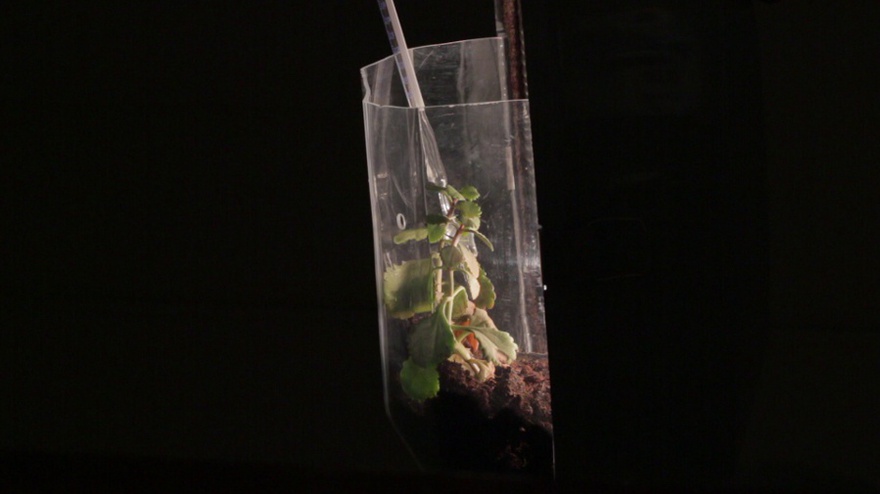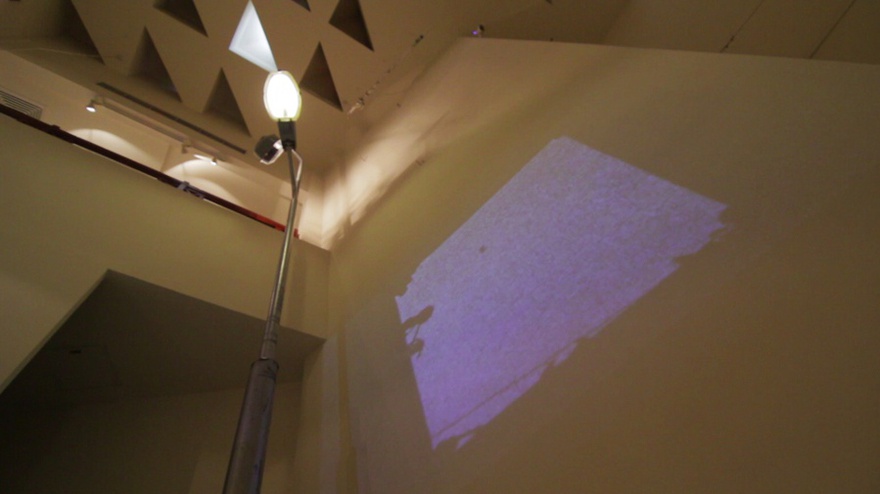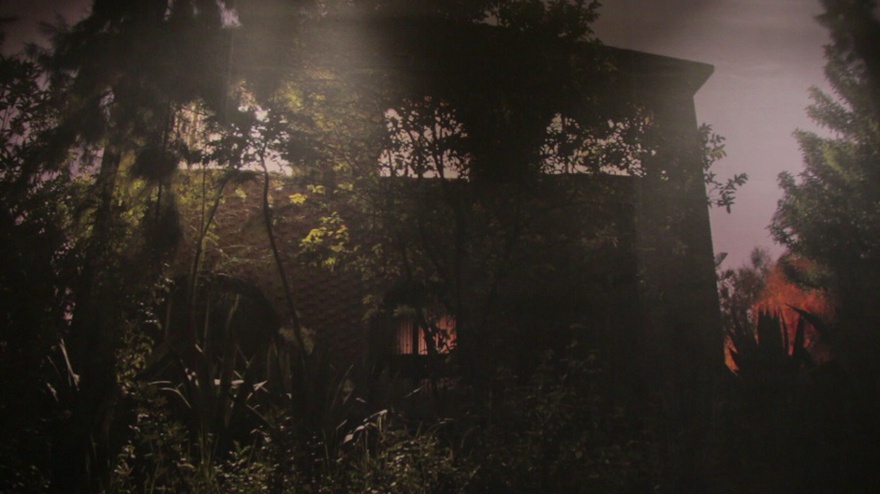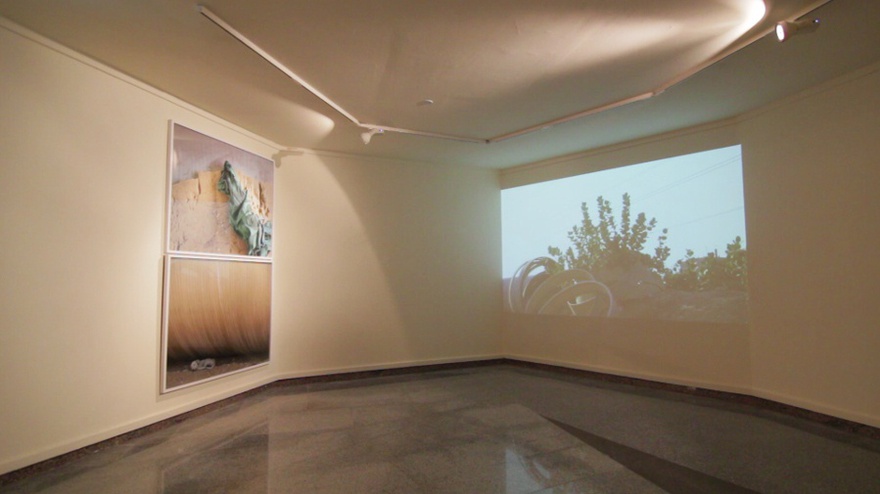Reviews
Assembled in Streams of Synonyms
Rana ElNemr at the American University in Cairo’s Sharjah Art Gallery
Of all the moments, people and places one encounters, what is it that stimulates and forms our imagination? This seems like an impossible question to answer, but one Rana ElNemr takes on in her new solo show, Assembled in Streams of Synonyms. Spanning two floors of the American University in Cairo's Sharjah Art Gallery, which is located in the university's new campus outside the city centre, it presents 11 photography, video, sound and text works. Many of the works cross-reference one another, leading to a cyclical trip through the gallery that is similar to a treasure hunt. The result isa fascinating, if uneasy, journey into ElNemr's psyche: one that expands on the artist's interest in capturing elements that trigger her imagination. She first experimented with this approach in Giza Threads, exhibited at the Townhouse Gallery, Cairo in 2012. The show presented photographs ElNemr shot as she followed the standard routes of site-seeing buses in the city. But it did not depict the touristic sites. Instead, ElNemr photographed objects and events that distracted her from the main attractions. Likewise, in Assembled in Streams of Synonyms, ElNemr pushed this approach further, presenting the characteristics of places that make her daydream, and then detaching them from their surroundings, thus allowing for a more private, if ephemeral, experience with them in the gallery.
For ElNemr, the images she presents are fragments that visitors need to piece together. In a multimedia work, which is named after the exhibition and acts like an artist statement, she describes how these fragments 'are transferred from – or to – another person's realm of floating images. This happens when the person's imagined construction scans its surroundings for missing pieces to complete their own imagined scene.' Along with the text, this artwork includes an animated exhibition map with arrows directing viewers around the gallery, as well as a series of images and films, some selected from her well-known Olympic Garden series (2009). Similar to other pieces in the show, ElNemr abstracts the site's location by focusing on green patches of grass circling the building's wall. Another work that greets viewers at the outset of this exhibition articulates the artist's own relationship to place and imagination: a magnified photograph of the book The Dictionary of Imaginary Places by Alberto Manguel and Gianni Guadalupi, which stands on a shelf. The anthology lists detailed descriptions of imagined locales collected from world literature. Five excerpts from it are also included in Extent (2014), shown on the top floor. They describe 'Dictionopolis' (a city where words and letters are traded in a weekly market), 'Digitopolis' (a town that mines numbers and sells those which get broken as fractions) and an evergreen 'Kingdom of Imagination'. These are presented on a screen next to a series of photographs ElNemr shot of densely populated neighbourhoods in Cairo. One photo shows a concrete building bordering agricultural land and a community-built football field. The absence of people allows for an endless possibility of events, a potential for transformation that encourages visitors to complete the stories on their own with the excerpts acting as possible starting points.
Such experiences are what make this show so interesting to visitors. We are not passive viewers. The exhibition demands that visitors work through it, with clues gradually unfolding as the exhibition continues. In the main hall, for example, is a wall-sized photograph of a garden villa at sunset; the skyline gradually changes from fiery oranges to shades of purple. It is part of the piece titled It Became Known that King Mariout Now Has A Library (2014) about the relocated library in northern Egypt – a story we only learn about when we reach the end of the exhibition, where we can listen to an economics professor, fond of nature, narrate his visions behind founding it. In this, what ElNemr asks of her audience is a willingness to fill gaps with personal imagination. She zooms in on details of the city, presenting us with microcosms with minimal human presence, so that we can add our own narratives. In Depot (2014), we watch a close-up video of a plant growing in the desert, for instance; the work still feels like a photograph, but the element of time makes us gaze long enough to drift. Another photograph in this work shows a dog sleeping by a construction pipe. Other visual fragments include a hand-drawn map marking ElNemr's travels through the city and is titledMap (2014). At times, the images might seem mundane; they do not show the city's fascinating architecture or bustling streets. Yet, they are familiar details to Cairo's residents – so familiar that we cannot pinpoint them to any specific location.
Connecting the entire exhibition is a very urban metal structure: a real-life lamppost in which a cactus plant grows titled The Living Object (2014). The piece highlights one of the key threads running through the exhibition, which is the confluence of urban sprawl and organic growth, and the potential for imagination to develop out of both. The Living Object's street lamp, for instance, has been transformed into a more organic element of the city with the addition of a plant growing around the light bulb, just as the lamp's arms curl down in different directions so as to connect the two floors making up the exhibition. This connection allowed for a consideration of the installation of this exhibition in the Sharjah Art Gallery, whose programming was previously limited to student shows interspersed with occasional solo shows by major Egyptian contemporary artists. The gallery itself manages to perform a similar function to the works on display in this exhibition. Located at the university's new campus in the middle of the desert, far from the city centre, one has to travel to get there, and once you're inside you are totally detached from the world. There is no noise, no people, and you can wander the space for hours. Perhaps this location functions as one of ElNemr's spaces for imagination, too.
Assembled in Streams of Synonyms was on show at the AUC Sharjah Art Gallery from 30 November 2014 to 15 January 2015. It is part of AUC_LAB, a new series of monographic exhibitions and projects by artists from the region, which the gallery organizes with local partners as part of its educational framework. Maha Maamoun curated this exhibition for the gallery. Previous projects featured Malak Helmy and Hassan Khan, and were curated by Beirut and Cairo Lab for Urban Studies, Training and Environmental Research – CLUSTER respectively.
Rana ElNemr is an artist who works primarily with photography, but also engages text, film, sound, and sculpture. She has performed extensive research and developed various workshops, which aim to analyze, question, and develop our relationship with the images we produce or consume. ElNemr has received several awards for her work and research on the image, and has held exhibitions at the Townhouse Gallery Cairo, the Museum of Fine Arts Boston, and the Zentrum fuer Kunst und Medientechnologie, Karlsruhe (ZKM). She is a co-founder of the Contemporary Image Collective (CiC), a space for arts and culture founded in Cairo in 2004.









